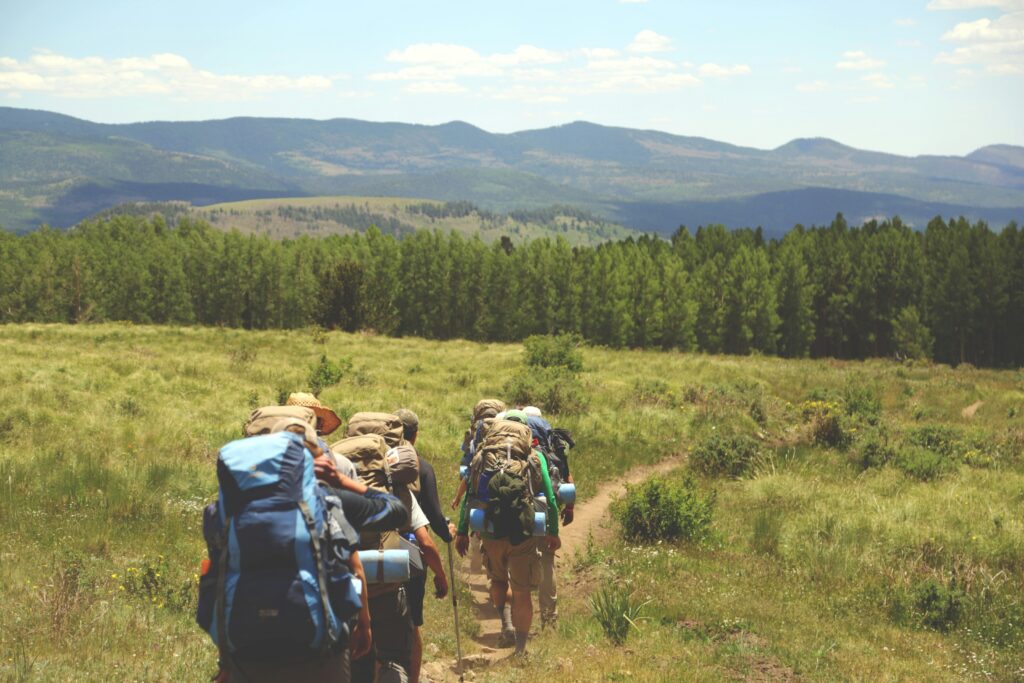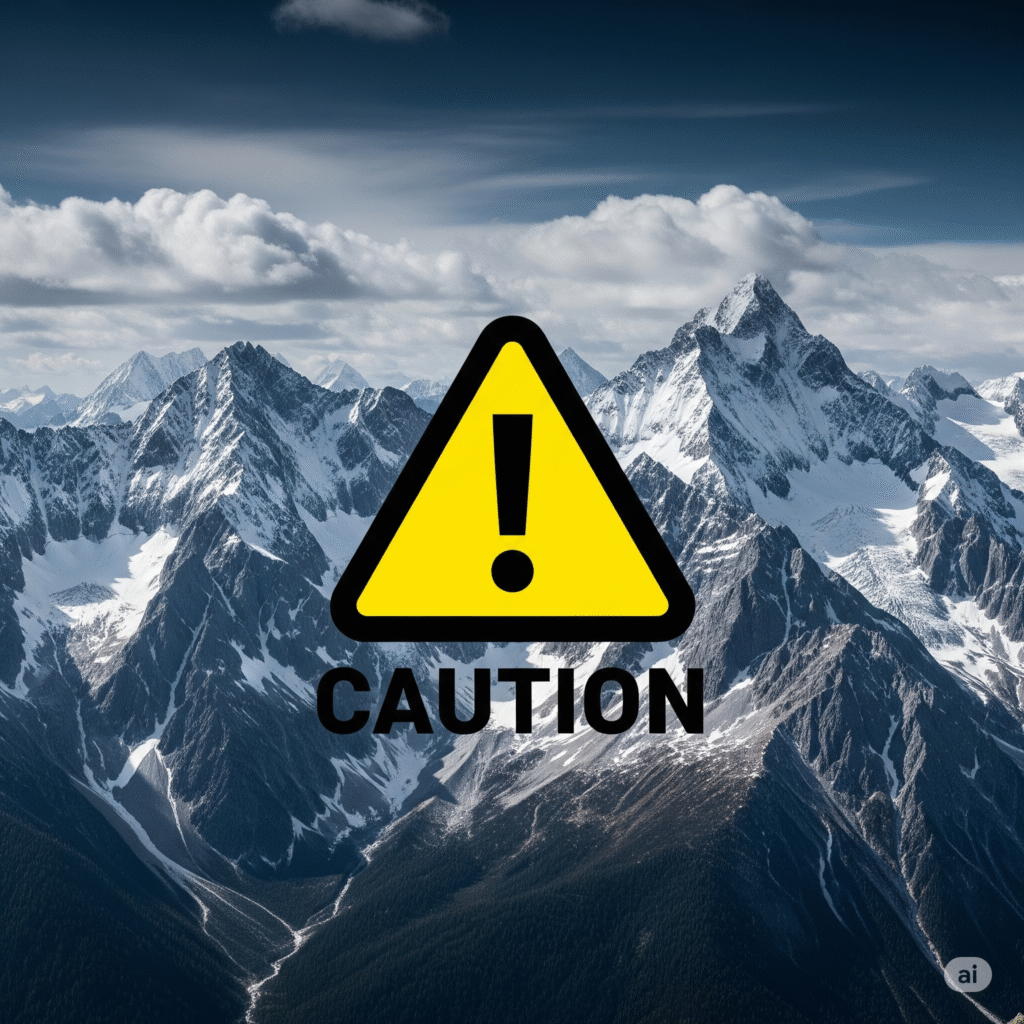
Hiking has a certain supernatural power to it. Only you, the natural world, and the steady speed of your footsteps on a trail are present.
Hiking is one of the easiest pleasures you can give yourself, whether you’re seeking some fresh air and scenery or are trying to escape the daily hustle of the city.
Hiking only requires the ability to walk and be aware of your location; no special skills are required.
However, before you lace up your boots and head out, pause for a moment and know all the safety guidelines by the experts and the locals of the region.
First, What is Hiking?
Walking along trails or paths in natural settings is the activity of hiking, an outdoor sport. It can range in length and difficulty from easy, quick walks to challenging, lengthy treks. Hiking is well-liked for both its mental and physical health.
So, what are the Types of hiking?

There are many different types of hiking, but there are some:
- Backcountry hiking into wilderness and off established trails.
- Thru hiking or long-distance hiking spans several days, or even weeks or months.
- Backpacking, which implies hiking with overnight stays, though it may or may not include long-distance trails.
- Section hiking is like hiking part of a long trail, doing the whole thing, but people do it in sections.
- Day hikes are those that can be finished in a single day. Most people only go on day hikes that are around 20 miles long.
- Trekking is a distinct kind of hiking. It can be rough and occasionally off-trail.
Safety Precautions to Take Before Your Hike

A great hike or a frustrating one can be based on preparation.
The good news?
Preparing only requires a little planning and awareness.
Let’s explore some tips in more detail.
- Know Your Trail Before You Go
The biggest mistake beginner hikers make is not doing the necessary research before setting foot on the trail.
Do a little research first:
- How long is the trail?
- Is it easy, moderate, or hard?
- New routes are wildly important.
- Keeping aware of trail conditions
- Are there rest areas or bathrooms?
- Downloading an offline map just in case
- Check the Weather Like a Pro
Make sure to check the weather forecast on the day of your hike. Conditions can change quickly, especially in mountainous areas, even if it appears to be sunny right now.
- If there is a chance of thunderstorms, a lot of rain, or extremely high temperatures, stay away from hiking.
- Wearing layers, particularly important for hikes in the mountains or forests where temperatures fluctuate frequently.
- A light rain jacket is always a good idea, even if it “looks clear.” Safer than wet.
- Tell Someone Where You’re Going
Here’s another simple, and probably life-saving tip. At the very least, let someone know where you plan to hike and when. Whether you’re hiking alone or with friends, tell someone your plan:
- Where are you going?
- When do you expect your return?
- You are hiking so that friends and family can follow you in real time in case you are in danger, so they can be concerned (and call for help) when necessary.
- Pack Smart — Not Heavy
Bring a few necessities in a small backpack. Comfort and safety should come first at all times.
This is a basic checklist for beginners:
- Small first-aid kit
- A light snack and a minimum of one liter of water
- Sunscreen and bug spray
- Full phone charge
- Lightweight cloth in case of any emergency
- Flashlight or headlamp
- Sunscreen + hat
- Bug spray
- Wear the Right Shoes
When they first start out, everyone wants to buy the priciest pair of boots right away. Although this isn’t a bad thing, expensive boots aren’t necessarily necessary for beginner hikers.
Everything depends.
Avoid wearing sandals or running shoes on trails.
- Try to wear hiking boots if you want ankle support.
- Trail footwear for short or easy hikes
- Start with Local Hikes
As a beginner, picking a short trail is crucial. On a hike, Nothing is more discouraging on a hike than having to turn around.
- 1 to 5 miles long
- Trails with straightforward signs
- Near home or in popular parks
Everyone must begin slowly and increase their weight or distance gradually.
- Navigational devices
For safe hiking, you must always have a map, compass, or GPS device with you. By using these tools, you can navigate and stay on course.
A GPS provides exact location information, a compass indicates direction, and a map gives a general overview of the area. Your confidence and safety on the trail are increased when you use these tools properly.
- Hydrate and Snack Often
It is essential to stay hydrated, even on short hikes. Remember to bring plenty of water.
Snacks while hiking are also important. Considering that hiking uses more energy than a typical walk, pack light, nutrient-dense foods like
- Juices
- Dried fruit
9. Avoid getting too close to wildlife.
Avoid touching, feeding, or approaching wildlife. Bears, bison, cougars, and wolves should be kept at least 100 meters away. Other large animals, like moose, elk, deer, sheep, and goats, should be kept at least 30 meters away.
It’s a great experience to see wildlife while hiking, but it also comes with a responsibility to give them the space they require to keep you and them safe.
Conclusion
Those who are new to hiking may find it a little challenging. That feeling of peace and freedom, however, comes when you set foot on a trail.
Remember, prioritizing safety is not equivalent to less enjoyment. The hike is actually even more fun when you know you’re ready.
And who can tell? An early hike could ignite a passion for the outdoors that lasts a lifetime.

